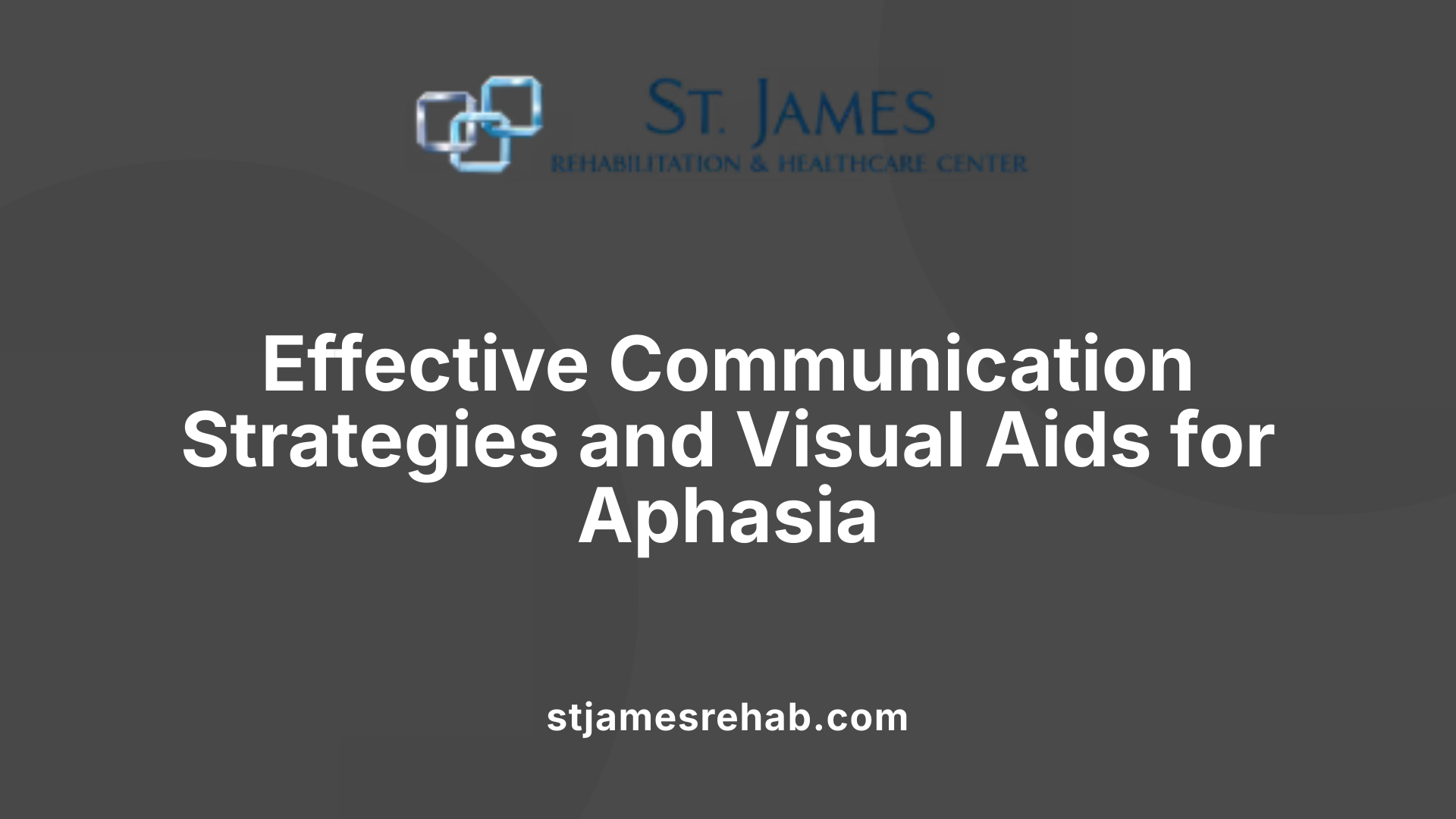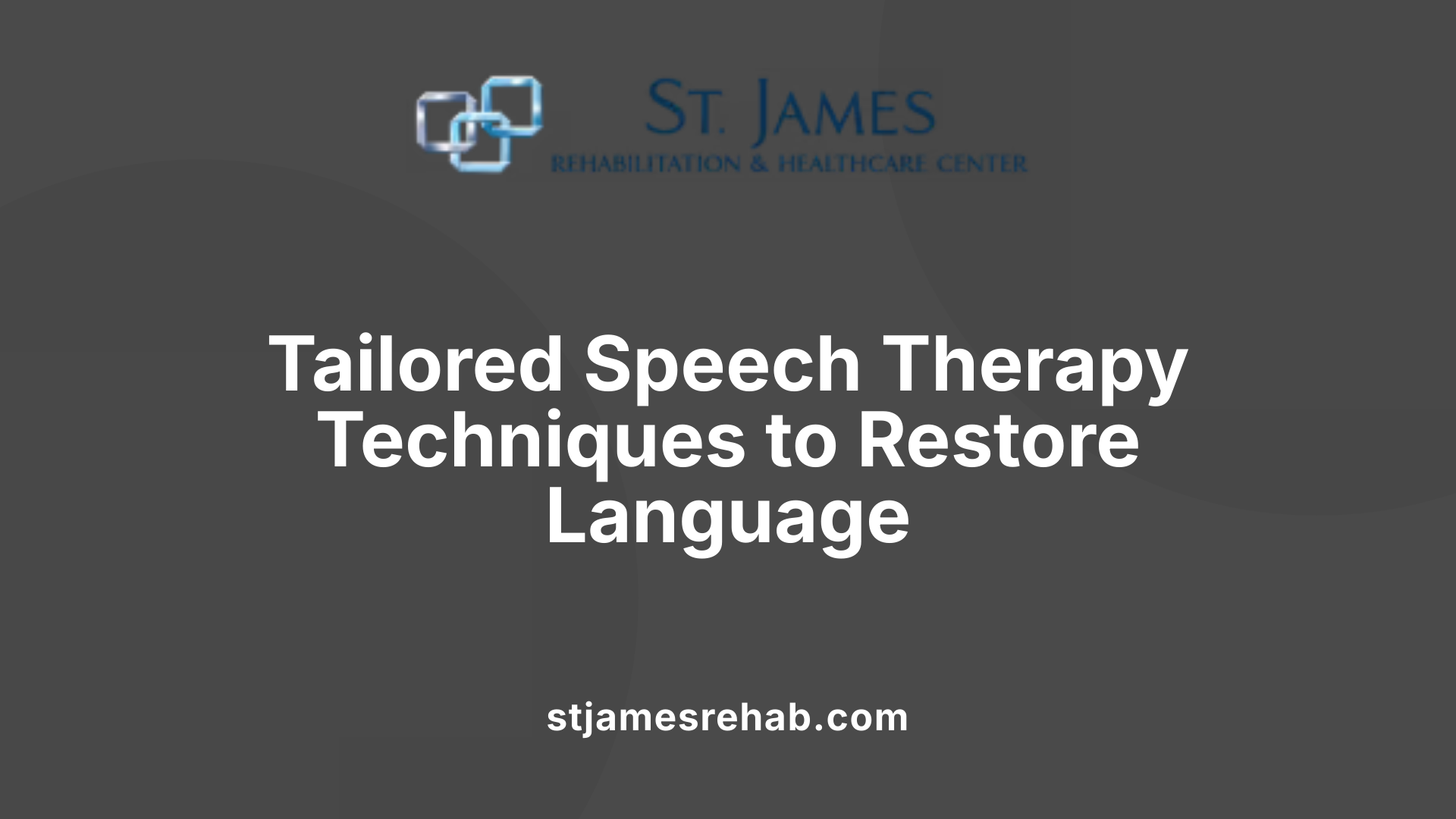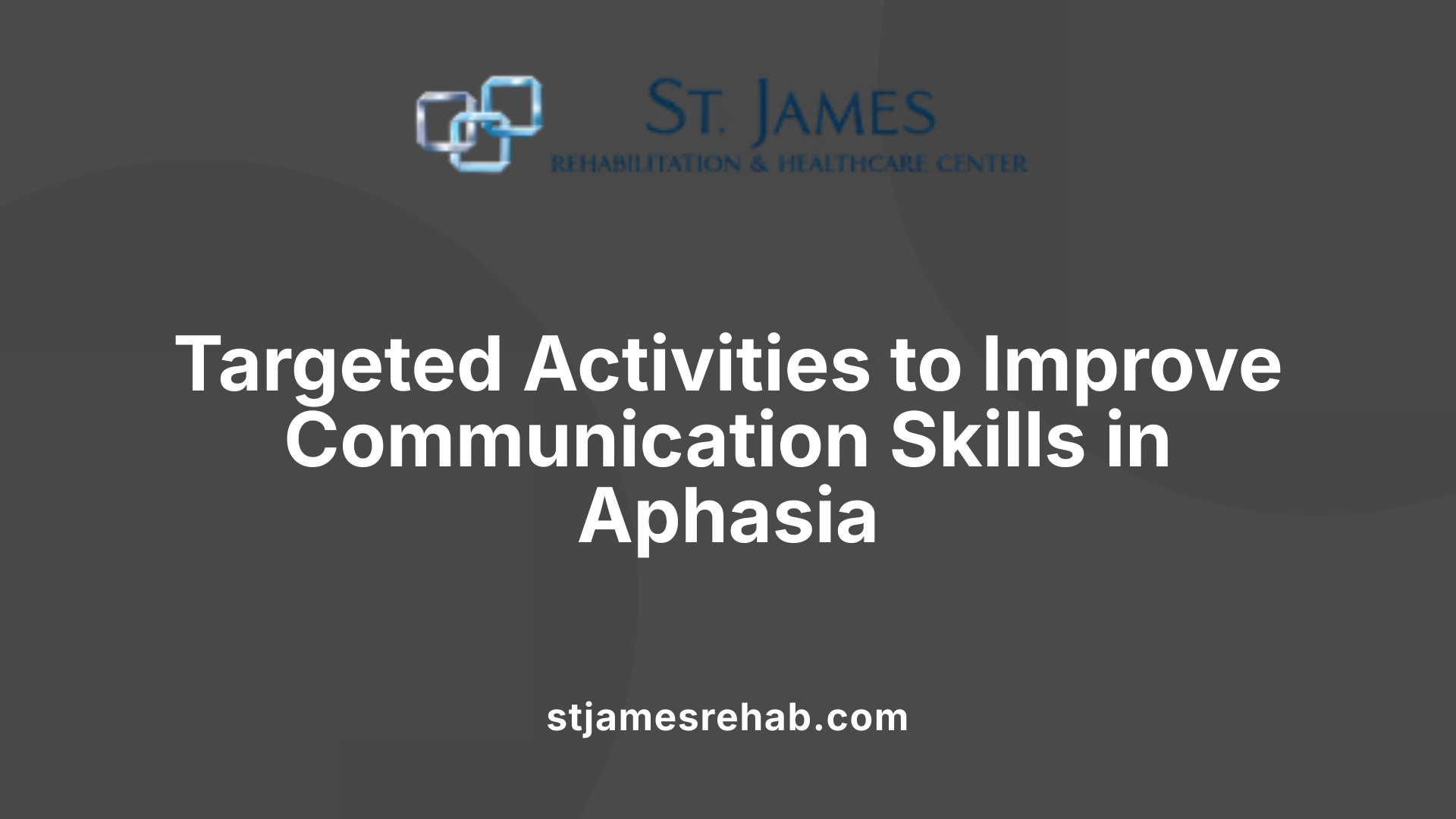Speech Therapy for Overcoming Communication Barriers in Aphasia
Harnessing Speech Therapy to Break Down Communication Barriers in Aphasia

Understanding the Foundation of Aphasia and Its Impact on Communication
Aphasia is a neurological disorder resulting from brain injury, commonly caused by stroke or trauma, which impairs the ability to communicate through speaking, understanding, reading, or writing. Although the severity and types vary—from Broca’s aphasia, characterized by halting speech, to Wernicke’s aphasia, which involves fluent but nonsensical speech—individuals with aphasia retain their intelligence and emotional capacity. Recognizing the diverse presentations of aphasia is crucial in tailoring effective speech therapy interventions that aim not only to recover language skills but also to restore social participation and emotional well-being.
Communication Strategies and Tools for Managing Aphasia

What are effective communication tools and strategies for managing aphasia?
Managing aphasia effectively involves a range of communication tools and approaches tailored to the individual’s needs. Visual aids play a major role; these include pictographs, communication picture books, and icons, which help individuals convey and understand messages more easily. Such aids serve as universal language supports that bridge speech difficulties.
Supporting these visual tools, simplifying language ensures clarity. Clinicians and communication partners are encouraged to use short, direct sentences spoken in a natural tone, avoiding complex language that could cause confusion. Incorporating gestures, writing keywords, and using pictures can also bolster understanding and expression, especially when words are hard to find or produce.
Patience and attentiveness are crucial in all interactions. Reducing environmental distractions—such as noise or bright lights—creates a conducive atmosphere for communication. Being attentive to cues from the person with aphasia and responding accordingly fosters confidence and motivation.
Confirming understanding is another important strategy. Summarizing information, asking yes/no questions, and encouraging participation help ensure that the message has been received and understood correctly. These techniques also empower the individual, making them active participants in conversations.
Utilizing appropriate communication aids further supports engagement. Tools such as picture dictionaries, custom communication apps, and communication cards are versatile. They can be used in various settings, from healthcare environments to social gatherings, helping individuals with aphasia participate fully.
In summary, combining visual supports, simplified language, patience, clear confirmation of understanding, and technological aids creates a comprehensive approach. These strategies not only improve day-to-day communication but also help preserve the person’s independence and social connections.
Speech Therapy Approaches and Techniques for Aphasia

What types of speech therapy are used to help individuals with aphasia?
Aphasia therapy employs a variety of methods tailored to the specific needs and severity experienced by each individual. These approaches aim to improve language functions such as speaking, comprehension, reading, and writing.
One well-known technique is Melodic Intonation Therapy (MIT), which leverages melody and rhythm to stimulate healthy right-hemisphere areas of the brain. This method is especially effective for nonfluent aphasia, helping patients produce speech by singing words or phrases.
Constraint-Induced Language Therapy (CILT) encourages spontaneous speech by restricting reliance on alternative communication methods like gestures or writing. It involves intensive daily practice with a focus on verbal language use, fostering neural reorganization toward more verbal communication.
Semantic Feature Analysis (SFA) and Verb Network Strengthening Treatment (VNeST) focus on enhancing word retrieval abilities. SFA helps patients name objects by describing their features, while VNeST strengthens the semantic networks related to verbs, contributing to more effective word and sentence production.
Script Training and Sentence Production Programs aim to facilitate automatic speech and improve sentence structure. These methods involve practicing personalized routines or scripted conversations that the individual can use in daily life.
In addition to these, Word Retrieval Cueing Strategies and Response Elaboration Training serve to enhance vocabulary access and conversational skills. These techniques often incorporate visual cues, prompts, and repetitive exercises.
Many of these approaches are combined in evidence-based programs designed to restore language capabilities or support effective communication despite persistent impairments. Their selection depends on the aphasia type, severity, and individual goals.
Overall, the integration of these therapies offers hope for improved language function, greater independence, and better quality of life for people with aphasia.
Activities and Exercises to Enhance Communication in Aphasia

Are there specific activities or exercises that can improve communication in aphasia?
Yes, there are many targeted activities and exercises designed to boost communication abilities in individuals with aphasia. These methods aim to strengthen both expressive and receptive language skills.
One common approach involves word-finding strategies, where individuals practice retrieving words through cueing or contextual hints. Naming tasks with picture cards are widely used, helping individuals practice naming objects, people, or actions by viewing visual prompts.
Semantic feature analysis is another effective exercise. It encourages patients to describe the different attributes of a word, such as category, function, or appearance, to facilitate word retrieval.
Exercises focusing on phonological components aim to enhance sound-based language skills. This includes activities to improve the ability to segment words into sounds or strengthen phonemic awareness.
Verb network strengthening activities target action words, helping individuals develop more fluid and accurate expression of verbs within their speech.
Technology also plays a significant role, with apps designed specifically for naming and retrieval practice. These apps often include cued naming exercises, where users are prompted with hints, and responsive naming tasks to reinforce word associations.
Structured exercises involving sentence formation and daily conversation practice help in organizing language output and promoting functional communication.
Most of these activities are most effective when conducted regularly and under the supervision of a speech-language pathologist. This professional guidance ensures exercises are tailored to the individual's specific needs and progress is monitored.
In conclusion, by systematically engaging in these exercises, people with aphasia can see notable improvements in their ability to communicate effectively, regain confidence, and participate more fully in social interactions.
The Role of Speech Therapy in Language Recovery and Quality of Life
How does speech therapy aid in the recovery of communication abilities for people with aphasia?
Speech therapy plays a crucial role in helping individuals with aphasia regain their communication skills and participate fully in daily life. Therapists use targeted, evidence-based approaches such as Constraint-Induced Language Therapy (CILT), Melodic Intonation Therapy (MIT), and semantic feature analysis to improve speech production, comprehension, reading, and writing.
Early intervention is vital; starting therapy promptly after diagnosis can maximize recovery prospects. Intensive and personalized treatment plans, tailored to an individual's specific needs and strengths, are most effective. Therapy can be delivered through one-on-one sessions, group activities, or online platforms, offering flexibility and accessibility.
Incorporating technology such as speech-generating devices, communication apps, and online therapy tools enhances the rehabilitation process. Family members and caregivers are actively involved, providing consistent support and reinforcing strategies learned during therapy.
Patients are also trained in alternative communication methods, including gestures, drawings, use of assistive devices, and supported conversation techniques, which help mitigate communication barriers.
Beyond restoring language, speech therapy significantly boosts emotional well-being by reducing frustration and increasing confidence. It promotes social participation by improving interactions with loved ones and the community.
Overall, speech therapy not only targets language recovery but also enhances social engagement, emotional health, and quality of life for people with aphasia, enabling them to regain independence and meaningful connection in their daily routines.
| Intervention Type | Techniques Used | Goals |
|---|---|---|
| Restorative Therapy | CILT, MIT, semantic analysis | Improve speech production, comprehension, reading, writing |
| Compensatory Strategies | Gestures, drawings, AAC devices, supported conversation | Facilitate effective communication in real-life situations |
| Technology Integration | Speech apps, online therapy platforms | Increase accessibility and practice outside clinical settings |
| Family and Caregiver Involvement | Training, support, home exercises | Reinforce skills learned, provide emotional support |
This comprehensive approach ensures that individuals with aphasia can regain their voice, confidence, and social participation, greatly enhancing their overall quality of life.
Evidence and Outcomes of Speech Therapy for Aphasia
What evidence supports the effectiveness of speech therapy in treating aphasia?
Research studies and meta-analyses have consistently shown that speech therapy is beneficial for people with aphasia. High-quality clinical trials, including randomized controlled trials, have demonstrated that targeted speech and language interventions can significantly improve communication abilities.
Meta-analyses synthesize data from numerous studies, confirming that therapy leads to gains in spoken language, reading, writing, and functional communication skills. These improvements are often maintained to some extent during follow-up assessments, highlighting the lasting effects of therapy.
The intensity and duration of therapy play important roles. Intensive programs—such as daily therapy sessions combined with home practice—have shown greater improvements, especially in individuals with long-standing aphasia. Such evidence emphasizes that consistent, prolonged engagement can accelerate recovery.
Large-scale community-based trials, like the COMPARE study, provide additional support. They reveal that community programs improve word retrieval, conversation skills, and overall quality of life, often at lower costs than traditional hospital-based treatments.
Ongoing research continues to reinforce the value of personalized approaches tailored to individual and cultural needs. Overall, this body of evidence confirms that well-structured speech therapy can produce meaningful improvements and help people regain independence in communication.
The Path Forward: Personalized and Innovative Approaches in Aphasia Therapy
While aphasia presents significant communication challenges, the array of speech therapy techniques and strategies available today offers hope for meaningful recovery and social reintegration. Advances in technology, personalized treatment plans, and evidence-based interventions continue to enhance therapeutic outcomes. Engaging family support, leveraging community resources, and adopting innovative approaches like virtual therapy and supported conversation methods such as SCA™ enable individuals with aphasia to regain confidence and participation in daily life. The future of aphasia rehabilitation lies in continued research, tailored interventions, and inclusive practices that address the unique needs of each individual, ensuring that communication barriers are progressively broken down.
References
- The Value of “Communication Strategies” in the Treatment of Aphasia
- Aphasia Communicating Through Barriers
- A Complete Guide to Speech Therapy for Aphasia: What You Need ...
- Person-centered care for people with aphasia - PubMed Central
- Speech Therapy Activities for Aphasia in Adults
- Communicative Access & Supported Conversation for Adults With ...
- How Speech Therapy can help Aphasia Patients Regain ...
- Exploring benefits of speech and language therapy interventions for ...





